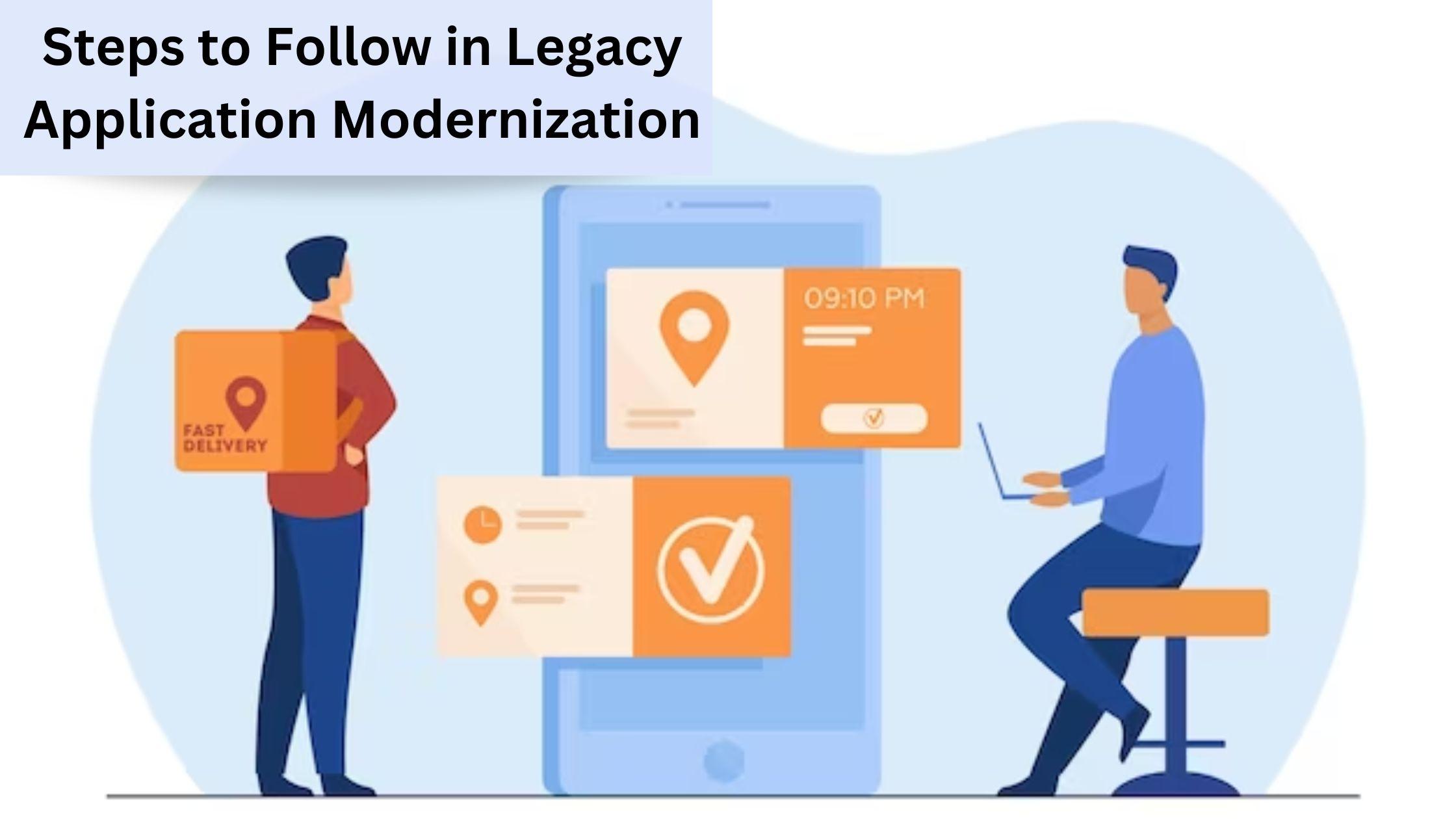In the rapidly evolving landscape of technology, legacy applications often find themselves struggling to keep up with the demands of the modern business environment. As organizations continue to prioritize agility, scalability, and efficiency, the need for legacy application modernization becomes more apparent. However, the process can be complex and challenging, requiring a strategic approach to ensure a seamless transition without disrupting critical business operations.
This blog will explore the steps to follow in legacy application modernization, shedding light on the best practices that organizations can adopt to revitalize their outdated systems and embrace the benefits of modern technology.
Understanding Legacy Applications
Before delving into the steps of modernization, it’s crucial to understand what constitutes a legacy application. Typically, legacy applications are outdated systems that may have been developed years or even decades ago. These applications are often built on obsolete technologies, making them difficult to integrate with newer solutions and impeding their ability to meet current business requirements.
Recognizing the Signs for Modernization
The first step in legacy application modernization is recognizing when it’s necessary. Several signs indicate that an application is becoming a hindrance rather than an asset:
Outdated Technology: If the application relies on outdated programming languages, libraries, or frameworks, it may struggle to keep up with modern standards.
Poor Performance: Frequent crashes, slow response times, and inefficiencies are indicators that the application is no longer meeting performance expectations.
Security Vulnerabilities: Older applications are more susceptible to security threats due to outdated security protocols and the absence of the latest security features.
Inflexibility: Legacy applications are often rigid and challenging to adapt to changing business requirements, hindering organizational agility.
High Maintenance Costs: As technology evolves, maintaining and supporting legacy applications can become increasingly expensive, draining resources that could be allocated elsewhere.
Steps to Follow in Legacy Application Modernization
Assessment and Planning:
Conduct a thorough assessment of the existing legacy application, identifying its strengths, weaknesses, and dependencies.
Define clear objectives for modernization, considering factors such as improved performance, enhanced security, and scalability.
Develop a comprehensive roadmap outlining the steps and milestones of the modernization process.
Data Analysis and Migration:
Analyze existing data structures and formats to ensure compatibility with modern databases and storage solutions.
Develop a data migration strategy to transfer critical information seamlessly from the legacy system to the modernized environment.
Implement data validation mechanisms to ensure data integrity throughout the migration process.
Choose the Right Modernization Approach:
Select an appropriate modernization approach based on the specific needs and constraints of the legacy application. Options include rehosting, re-platforming, refactoring, rearchitecting, or rebuilding.
Consider factors such as budget, timeline, and the desired level of transformation when choosing the approach.
Ensure Stakeholder Involvement and Communication:
Involve key stakeholders from different departments in the modernization process to gain valuable insights into their specific requirements and expectations.
Establish clear communication channels to keep stakeholders informed about the progress, potential challenges, and expected outcomes of the modernization initiative.
Implement Agile Development Practices:
Adopt agile development methodologies to enhance flexibility and responsiveness throughout the modernization process.
Break down the project into manageable sprints, allowing for continuous testing, feedback, and adjustments based on evolving requirements.
Prioritize Security:
Prioritize security considerations throughout the modernization process, identifying and addressing potential vulnerabilities in the legacy application.
Implement modern security protocols, encryption methods, and access controls to fortify the application against cyber threats.
User Training and Adoption:
Develop a comprehensive training program for end-users to familiarize them with the new features, interfaces, and functionalities of the modernized application.
Provide ongoing support to address any issues or concerns that may arise during the transition period, ensuring a smooth user adoption process.
Performance Testing:
Conduct rigorous performance testing to ensure that the modernized application meets or exceeds performance expectations.
Identify and address any bottlenecks, latency issues, or scalability challenges that may arise under different usage scenarios.
Iterative Testing and Quality Assurance:
Implement a robust testing and quality assurance framework, conducting iterative testing at each stage of the modernization process.
Use automated testing tools to streamline the testing process and identify potential issues early in the development cycle.
Documentation and Knowledge Transfer:
Document the modernized application thoroughly, including architecture diagrams, system integrations, and user manuals.
Facilitate knowledge transfer sessions to ensure that the development team, support staff, and end-users are well-equipped to understand and utilize the modernized application.
Post-Implementation Monitoring and Optimization:
Implement monitoring tools to track the performance, security, and user satisfaction of the modernized application post-implementation.
Continuously optimize the application based on user feedback, emerging technologies, and evolving business requirements.
Celebrate Success and Learn from Challenges:
Celebrate the successful completion of the modernization initiative, acknowledging the efforts of the team and the positive impact on the organization.
Conduct a post-implementation review to analyze challenges faced during the process, identify lessons learned, and apply them to future modernization projects.
Conclusion
In the ever-evolving realm of technology, legacy application modernization stands as a critical endeavor for businesses looking to thrive in the digital age. The steps outlined above provide a comprehensive guide for organizations aiming to breathe new life into their outdated systems and embrace the advantages offered by modern technology.
In this context, it becomes paramount to consider enlisting the services of seasoned professionals or, better yet, hire mobile app developers. These experts bring a wealth of knowledge and experience to the table, ensuring that the modernization process is not only seamless but also tailored to meet the unique needs of the organization.



